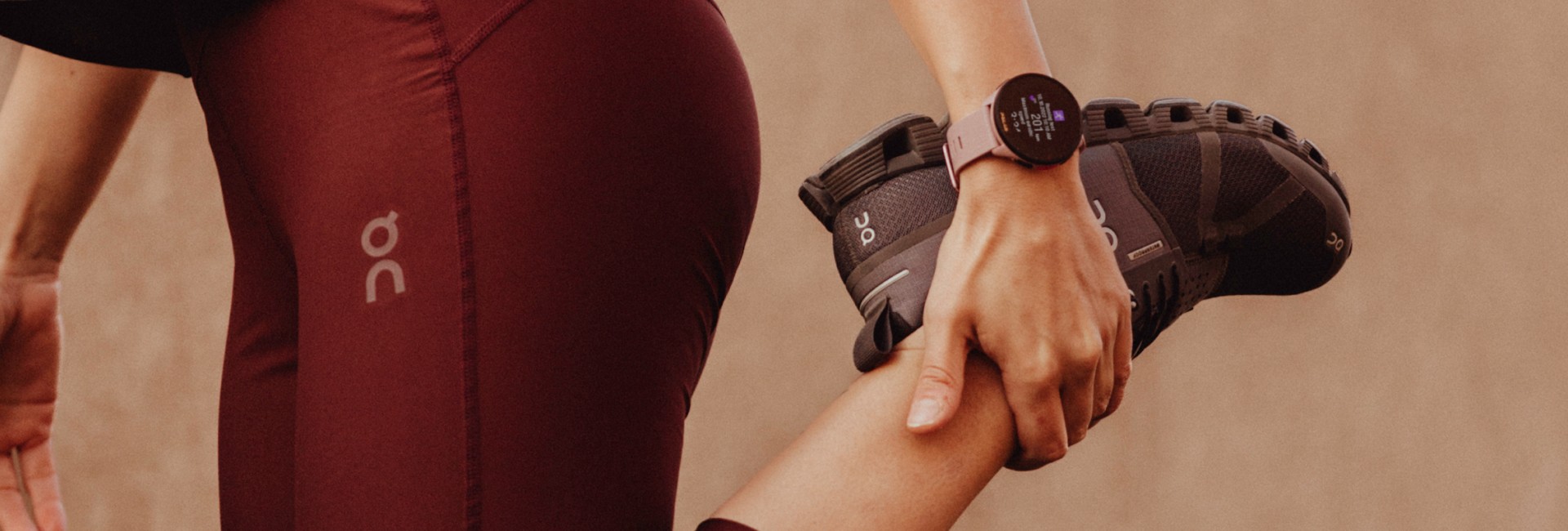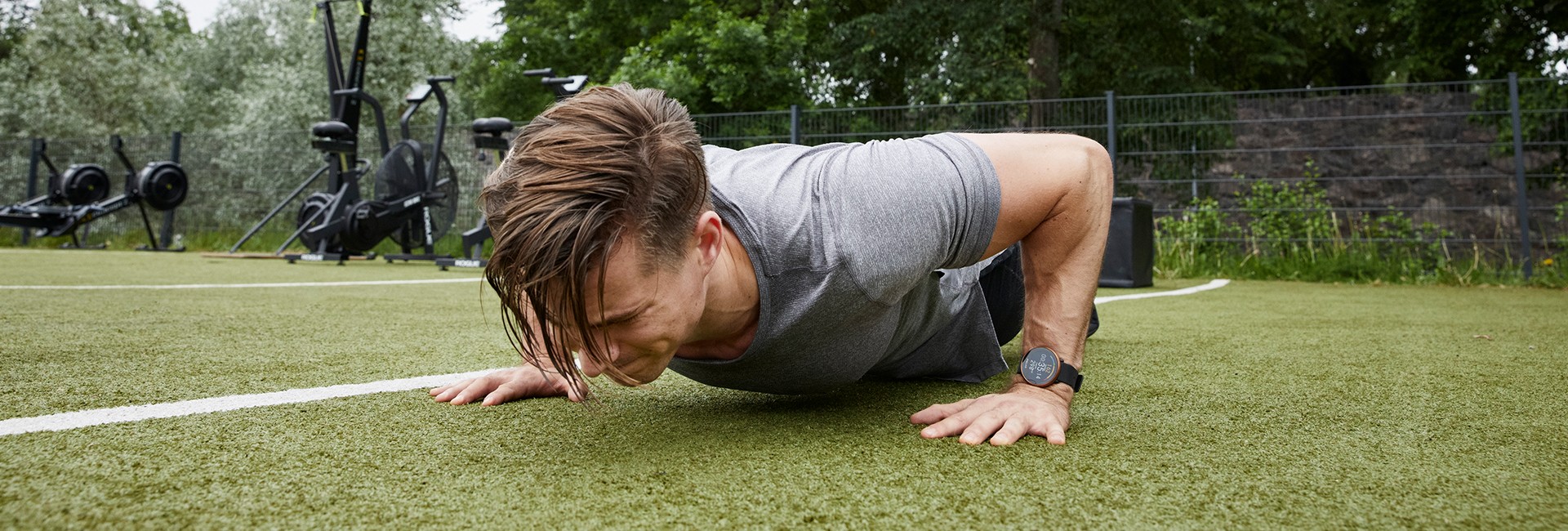As a runner, it’s important that you do more than simply run. If you want your sessions to be long, fast, and strong, it’s vital to support your body’s capacity to consistently do this. Here’s why strength training for runners is so essential, plus some simple exercises you can try at home, in the park, or at the gym.
Why strength training is crucial for runners?
For a runner, being strong means being able to maintain good posture and technique throughout their run, even the really long ones. If a certain part of your body is weak, then other parts begin to compensate. This leads to two things:
1) your running economy suffers.
2) your running technique changes, requiring more effort to maintain your pace.
Changes in running form can also lead to injuries. The prevalence of injuries in recreational or competitive long-distance runners has long been documented and for many, injuries are the main cause of giving up the sport. That’s why it’s important for all runners to include regular strength training, as it will significantly reduce the risk of injury.
Strength training also becomes more important as we age for similar reasons. We all start to lose around three to five percent of our muscle mass each decade after the age of 30. The only way to counteract this change is to strength train on a regular basis. Otherwise, the risk of injury increases as we get older. So essentially, stronger muscles = stronger bones = fewer injuries.
So, it’s vital that strength training be part of every running program. The beauty is that strength training can be as beneficial as your actual runs and are easy to start with some simple exercises (see below). Increasing strength addresses any structural weaknesses in your body, including muscles, joints, and connective tissue. As a result, you will develop resilience to deal with the prolonged cyclical nature of running.
What type of strength training is useful for runners?
Many running coaches recommend bodyweight exercises, such as push-ups and planks, or light weights to strengthen the legs with lunges and squats. But it isn’t just the legs that need to be strong. A capable core means the runner is able to hold the upper body upright and minimize unnecessary side-to-side movements.
The ideal strength training routine for improving long-distance running performance is one that primarily strains your legs but doesn’t forget the rest of your body.
Your arms are also important in running as their motion drives your legs. Think of your arms as similar to those of a conductor. They set the pace for the orchestra, which is the rest of your body. Don’t forget your hips, too, as weakness here has a direct impact on your knees and knees. That’s why the ideal strength training routine for improving long-distance running performance is one that primarily strains your legs but doesn’t forget the rest of your body.
You can also try a hybrid workout, where you do intervals of running and strength training all in the same session. This is a great way to prevent boredom, especially if you run on a treadmill at home or at the gym. Just remember to start slow and don’t push yourself too hard, as hybrid workouts can be high-intensity, and your body needs time to adjust so you don’t risk injury.
Getting started with strength training
If you’re completely new to strength training or it isn’t a regular part of your workout routine, start by adding one to two total body workouts to your training schedule each week. You can get a good workout even in half an hour with little or no equipment.
For at-home workouts, just clear some space for lunges, squats, sit-ups, and push-ups. For outdoor workouts, head to a park and make use of a bench for step-ups and dips.
Polar’s training guide, FitSpark™, offers daily, readymade on-demand workouts that match your recovery and fitness level as well as your training history.
The two key things to remember are to take your strength exercises slowly. You’ll get more out of each movement if you don’t rush them. Also, don’t overdo it. One to two strength training sessions is all you need.
Don’t have time to plan your strength sessions? Don’t worry. Polar’s training guide, FitSpark™, offers daily, readymade on-demand workouts that match your recovery and fitness level as well as your training history. Plus, it’s all easily accessible on your running watch.
Five strength exercises for runners
So now you know the basics of strength training for runners.
There are so many great strength exercises for runners to develop strength, but here are five key ones that make an ideal starting point. These will lay the perfect foundation to progress on to more advanced variations and new movements.
All you need is a medium-weight bar and some space around you. Depending on how you’re feeling and what your goal for the workout is, you can do anywhere from one to three rounds of each move, with 10 to 20 repetitions per move.
Watch Polar Running Coach Maria go over a simple, yet effective, strength training routine for runners that we recommend you incorporate into your weekly training plan.
EXERCISE 1: BACKWARD-STEPPING LUNGE WITH TAP OR KNEE
- Start with your feet right underneath your hips, with the bar sitting on your shoulders and your knees slightly bent.
- Take a long step back until your back knee comes close to the floor and your front knee is at a 90-degree angle.
- Lift back up to the start position and either tap the floor or bring the back knee forward and up. Be sure to lift your hips as you come back up.
EXERCISE 2: DEADLIFT
- Stand with your feet hip-width apart, and knees slightly bent, with your weight mostly on your heels.
- Keeping your back extended all the way from the nape of your neck to your tailbone, tip forward from the hips.
- Bring the bar just below knee height, then lift back up to standing. Keep your hips still and your knees soft.
EXERCISE 3: MOVING LUNGE WITH TAP OR KNEE LIFT
- From a standing position with the bar resting on your shoulders, leap forward until your back knee almost touches the floor.
- Bring your back foot in, either by tapping the floor or with the big knee lift, and take a big step.
- Move forward, alternating legs.
Option:
- If you don’t have a lot of space, replace the move with a forward-stepping lunge.
- Start with your feet hip-width apart and step forward until your back knee comes close to the floor and your front knee is at a 90-degree angle.
- Either step or kick yourself back up to starting position.
EXERCISE 4: UPRIGHT ROW AND OVERHEAD PRESS COMBINATION
- Stand with your feet hip-width apart, bar resting on your upper thighs, and hands just outside of your hips.
- Slide the bar up your chest with your elbows leading the way. Then flip your elbows under, catch the bar and press it up above your head.
- Lower back down to collarbone height with elbows pointing down. Then flip your elbows up, and lower the bar down to starting position.
- Keep the bar close to your body both on the way up and the way down.
Option:
- For more leg work, add squats when catching the bar, moving between upright row and overhead press.
EXERCISE 5: SIDE-STEPPING LUNGE WITH TAP OR KNEE LIFT
- With the bar on your shoulders and your weight firmly on one foot, take a long step to the side into a squat while keeping your other leg straight.
- From a squat, push yourself back up to standing by either tapping the moving foot or lifting the knee.
Remember, the keys to success with strength exercises are:
- Just one weekly total body workout is a good start.
- Your arms, hips, and core are as important as your legs.
- Gradually add loads and repetitions.
So, what are you waiting for? Start to incorporate these exercises into your weekly routine and watch your running performance take off.
If you liked this post, don’t forget to share so that others can find it, too.
Or give it a thumbs up!
I like this article
Please note that the information provided in the Polar Blog articles cannot replace individual advice from health professionals. Please consult your physician before starting a new fitness program.





